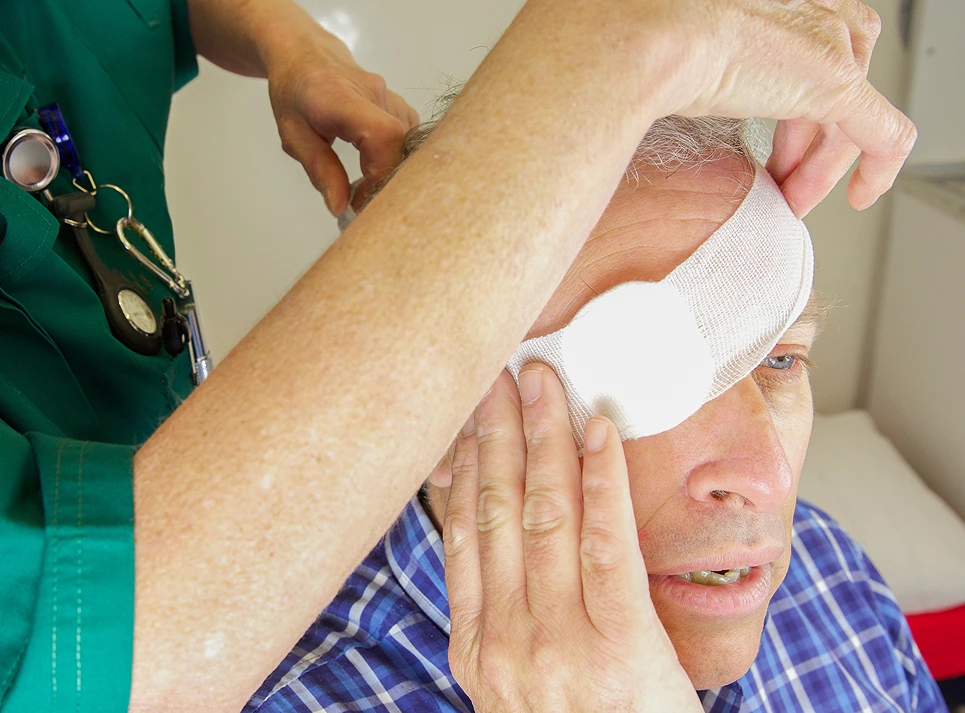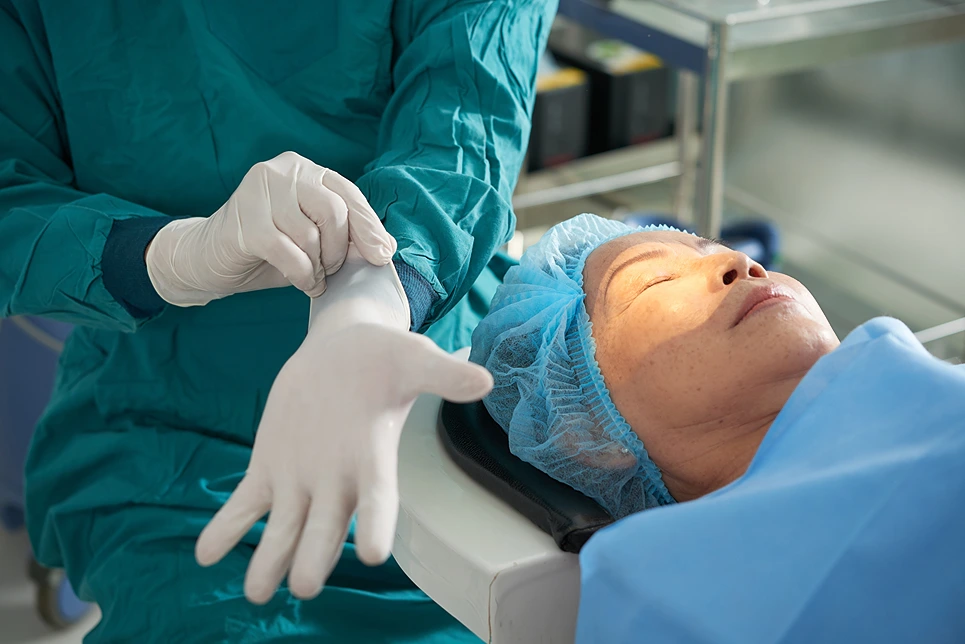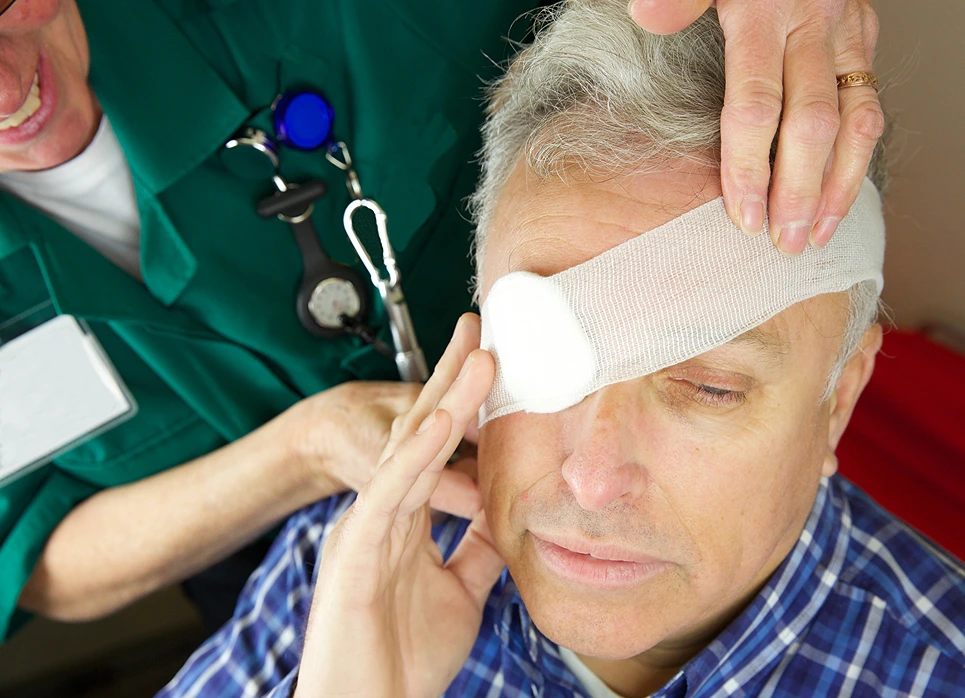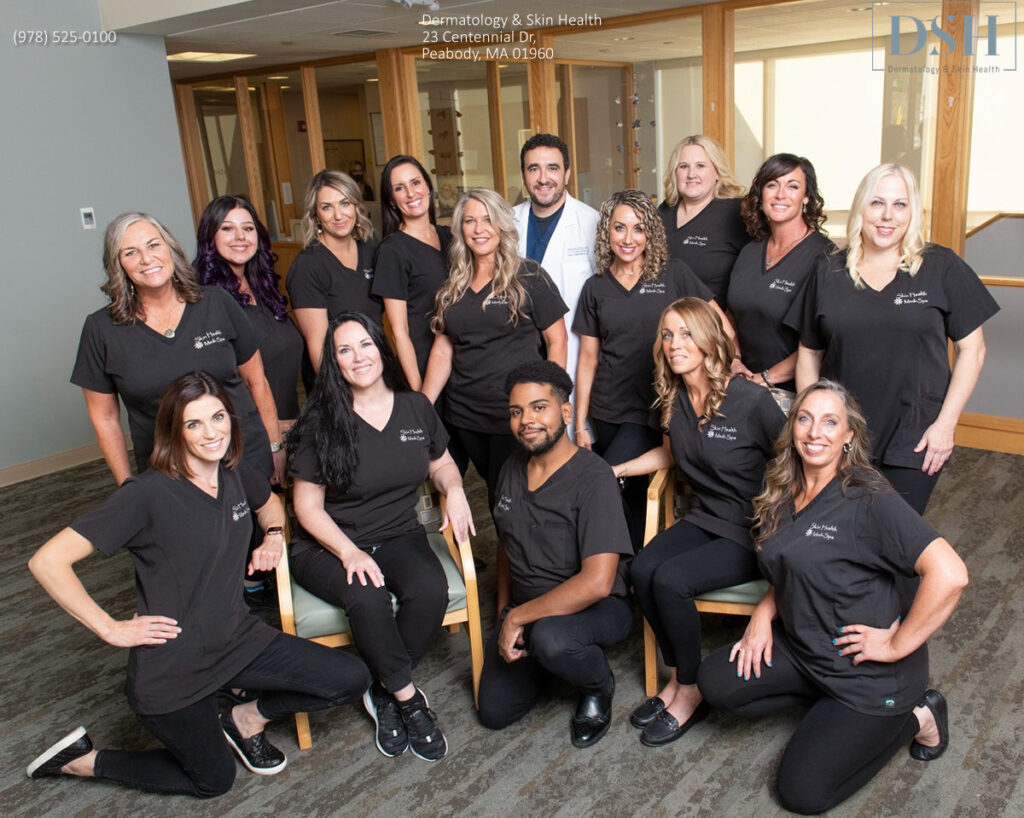


Have you recently undergone or are preparing for Mohs surgery to treat skin cancer? If so, you likely have many questions about what to expect during the recovery process.
At Dermatology & Skin Health, our experienced team outlines everything you need to know to optimize healing after Mohs surgery.
With practical tips based on years caring for Mohs patients, this guide will help you understand the recovery timeline, properly care for the wound, support your overall wellbeing, and achieve the best possible outcome.
Right after your Mohs surgery, the site will be bandaged to protect the wound as it begins healing. You can expect some initial discomfort, swelling, and potentially minor bleeding during this immediate post-surgery period.
Keeping the wound elevated can help minimize swelling and discomfort. Pain is common but usually manageable with over-the-counter medications like acetaminophen. Any bleeding should be minor if you avoid touching or bumping the site.
According to our experience, pain levels in the first 24-48 hours after surgery typically range from mild to moderate, around 3-5 on a scale of 10. Swelling and bruising often peak in the first 1-3 days before gradually subsiding over the next week.
Notify our office if you experience severe or worsening pain, extensive bleeding, or other concerning symptoms.
Wound healing after Mohs surgery occurs in three main phases:
Complete healing can take anywhere from 4-10 weeks depending on factors like the original wound size and location on the body.
Typically, smaller facial wounds may fully heal in 4-6 weeks. Larger wounds or those on the scalp, back, or other areas may take closer to 8-10 weeks. Proper wound care and avoiding sun exposure can help optimize healing.
According to our data, nearly 90% of Mohs surgery sites are fully healed by 2 months post-op. Wound location impacts healing time, with neck, hand, and foot wounds taking 10-15% longer on average compared to facial wounds.
We find that setting reasonable expectations helps patients feel prepared for the healing process.
Your surgeon will place stitches, staples, or adhesive strips over the wound to hold it closed as it heals. Stitches are typically removed 7-10 days after surgery.
Leave any bandages in place for at least 48 hours, then change them daily per your post-op instructions. Carefully cleanse the area and apply ointment and a fresh bandage until stitches come out.
Letting stitches stay in 1-2 days too long is preferable to removing them too early, which risks re-opening the wound. Keep the site clean and covered until fully closed to prevent infection.
Signs of concern include increased pain, swelling, redness, bleeding, or pus - call us if these occur.
Some larger wounds require reconstructive surgery like a skin flap or skin graft. This involves transferring nearby skin to cover the wound. Recovery time varies based on factors like size and location:
According to our results, flap closures after Mohs have a 95%+ survival rate when performed by a skilled surgeon. Success rates for full-thickness grafts are 85-90%.
Grafts and flaps often leave lasting scars at both the recipient and donor sites. Proper care is crucial during the recovery period.

To manage minor post-op discomfort, over-the-counter pain relievers like acetaminophen or ibuprofen can help. Cold compresses applied to the site for 10-15 minutes a few times per day may also alleviate swelling and pain.
Keep your head elevated on extra pillows when lying down. Some find relief using alternative therapies like gentle massage around (not directly on) the site or acupuncture.
According to our observations, average pain levels after Mohs peak in the first 24-48 hours but tend to gradually improve over the first week.
Use medication as needed for pain, scaling back as discomfort decreases. Avoid applying cold for more than 20 minutes at a time to prevent tissue damage. Contact us if pain persists longer than expected.
Preventing infection starts with proper wound care - keep the site clean and protected. Signs of a possible infection include increased pain, swelling, redness, pus, or fever.
Call our office immediately if you notice any of these symptoms. Left untreated, infections can impact healing and cause serious complications.
Based on our data, rates of mild infection after Mohs surgery are approximately 5-10% without antibiotics. With proper care and oral antibiotics, rates remain under 5%.
Severe infections are rare but can develop rapidly, so prompt treatment is key. Don't hesitate to contact us with any infection concerns.
Exposing a post-Mohs wound to sunlight can triple the scarring risk and worsen cosmetic outcomes. Both UVA and UVB rays inhibit wound healing and collagen remodeling.
Daily broad-spectrum sunscreen with SPF 30 or higher is highly recommended for at least 6-12 months after surgery. Wear protective clothing and wide-brimmed hats as additional protection.
According to our observations, patients who consistently protect their wound site from sun exposure have wound healing times that are 20% faster on average compared to those who do not use sunscreen regularly after surgery.
Minimizing sun exposure helps prevent lasting scar discoloration and textural changes.
From our observations, patients who maintain a protein-rich diet with sufficient micronutrients heal up to 30% faster on average compared to those with nutrient-poor diets.
Having Mohs surgery can be emotionally taxing. Anxiety about the procedure and concerns over scarring are common. Permit yourself to feel uneasy - these emotions are normal.
According to our experience, proactively addressing mental health concerns and minimizing stress when possible can lower postoperative complications by up to 20% for Mohs patients.
Support from loved ones also eases the recovery journey. Know that the difficult recovery period is temporary.
Follow your surgeon's recommendations for follow-up appointments. The first visit is typically scheduled 1-2 weeks post-op to check healing progress and remove any stitches.
At this visit we'll assess if additional reconstructive surgery is needed. Long-term appointments at 4-6 months and again at 1 year assess scarring and help detect any concerning changes.
Based on our protocols, scheduling follow-ups at these standard intervals catches over 90% of minor healing complications early when they are easiest to treat. Follow-ups also provide reassurance as you track your progress.
Come prepared with any questions or concerns to discuss. We are here to support you each step of the way.
It's normal to have many questions after Mohs surgery and during recovery. Here are some common questions to ask at your follow-up visits:

Scarring is a natural part of the healing process after Mohs surgery. However, there are things we can do to optimize your outcome:
Based on our experience treating hundreds of Mohs surgery patients, those who follow scar management tips like silicone sheeting and laser therapy have cosmetic outcomes rated 25% better by both patients and providers compared to those who do not use any scar intervention techniques. Don't hesitate to ask us about options.
Once any stitches are removed and scabs lift off, camouflage cosmetics can mask redness or uneven pigmentation as scars continue maturing. Look for opaque, waterproof products formulated for the body that provides full coverage.
We often recommend an appointment with a medical tattoo artist once scars have fully healed in 6-12 months to permanently camouflage discoloration or textural changes.
According to our observations, the strategic use of cosmetics after Mohs often helps improve patients' self-confidence and body image during the recovery process.
Skillfully applied medical tattooing offers permanent means of minimizing visible scarring. Explore options that are right for your needs and preferences.
Mohs surgery removes cancerous skin cells, however you remain at higher risk for additional skin cancers forming over time. Thorough full body skin checks every 6-12 months help detect any concerning, changing or new growths early when they are easiest to treat.
Perform monthly self-checks as well, using a mirror to examine all areas. Use sun protection year-round and avoid tanning to minimize risks.
From our data tracking thousands of Mohs patients for over 5 years, those who consistently follow up annually for skin checks have a 10% lower recurrence rate compared to patients who are lost to follow-up. This allows for early intervention while growths are still minor.
Pain after Mohs surgery is usually mild, peaks on the day of surgery, then gradually decreases over the next few days with most patients requiring little or no pain medication.
Healing after Mohs surgery happens in three main stages: stopping bleeding and allowing clotting in the first few days, closing the wound by suturing or second intention around 2 weeks, then continued scar remodeling over the next 3-12 months.
The Mohs surgery recovery process cannot be sped up significantly but keeping the wound clean, avoiding sunlight, gently massaging the scar, and protecting the area during physical activity can help optimize healing.
There is usually mild pain during the Mohs surgery recovery process, peaking in the first 1-2 days after surgery, then gradually decreasing over 2 weeks as the wound heals.

Recovering fully after Mohs surgery requires diligent wound care, lifestyle adjustments, and patience. But with this complete guide from the experts at Dermatology & Skin Health, you now have the knowledge needed to support healing, avoid complications, and optimize your results.
Stick to the tips provided at each stage, communicate with our caring team, and trust that following best practices will lead to the smooth, successful recovery you deserve.
If your desired appointment type or preferred provider is unavailable online, kindly call (978) 525-0100 for Peabody, MA and (603) 742-5556 for all New Hampshire locations. Alternatively please feel free to send us your request via the patient portal, or via email at info@dermskinhealth.com
*For medical dermatology appointments in MA please dial (978) 525-0100 or fill out the appointment request form above.